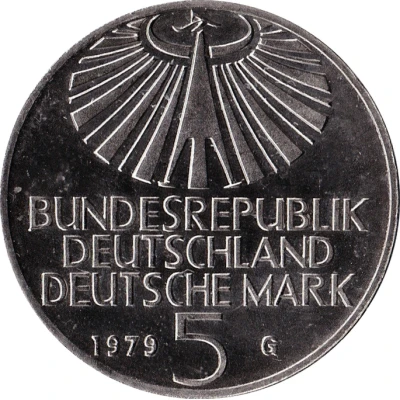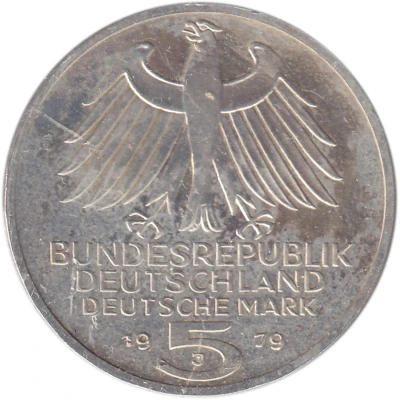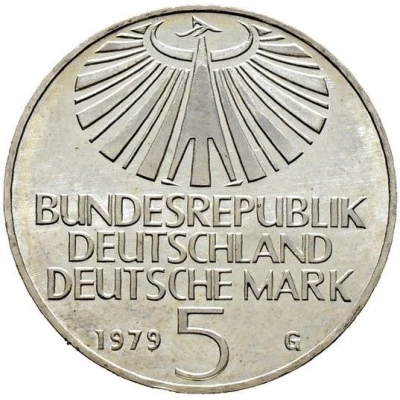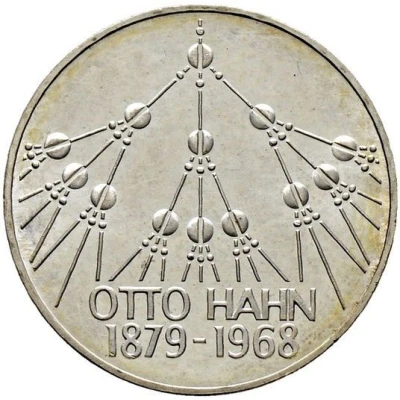


© nalaberong
5 Deutsche Mark Otto Hahn
1979 year| Copper-nickel clad nickel (Cladding: 75% Copper, 25% Nickel; Core: 100% Nickel) | 10 g | 29 mm |
| Issuer | Federal Republic of Germany |
|---|---|
| Period | Federal Republic (1949-date) |
| Type | Non-circulating coin |
| Year | 1979 |
| Value | 5 Deutsche Mark (5 DEM) |
| Currency | Deutsche Mark (1948-2001) |
| Composition | Copper-nickel clad nickel (Cladding: 75% Copper, 25% Nickel; Core: 100% Nickel) |
| Weight | 10 g |
| Diameter | 29 mm |
| Thickness | 2.07 mm |
| Shape | Round |
| Technique | Milled |
| Orientation | Medal alignment ↑↑ |
| Demonetized | 31 December 2001 |
| Updated | 2024-10-05 |
| Numista | N#9721 |
|---|---|
| Rarity index | 14% |
Reverse
Chain reaction of nuclear fission
Script: Latin
Lettering:
OTTO HAHN
1879-1968
Engraver: Helmut Stromsky
Edge
Plain with incuse lettering
Lettering: ERSTE SPALTUNG DES URANKERNS 1938
Comment
Otto Hahn was a German chemist who won the 1944 Nobel Prize in Chemistry for his discovery of nuclear fission. He is considered the "father of nuclear chemistry".Interesting fact
One interesting fact about the 5 Deutsche Mark (Otto Hahn) coin from 1979 is that it features a unique design that was created by the artist, Erich Bäumler. The obverse side of the coin depicts a portrait of Otto Hahn, a German chemist who was awarded the Nobel Prize in Chemistry in 1944 for his discovery of nuclear fission. The reverse side of the coin features a stylized representation of a splitting atom, which symbolizes Hahn's groundbreaking work in the field of nuclear physics. The coin's design is not only visually striking, but it also serves as a reminder of the important contributions that Hahn made to science and humanity.
Price
| Date | Mintage | VG | F | VF | XF | AU | UNC |
|---|---|---|---|---|---|---|---|
| 1979 G | 350000 | - | - | - | - | - | - |
Values in the table are based on evaluations by sales realized on Internet platforms. They serve as an indication only for 5 Deutsche Mark (Otto Hahn) 1979 coin.



